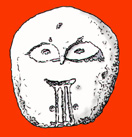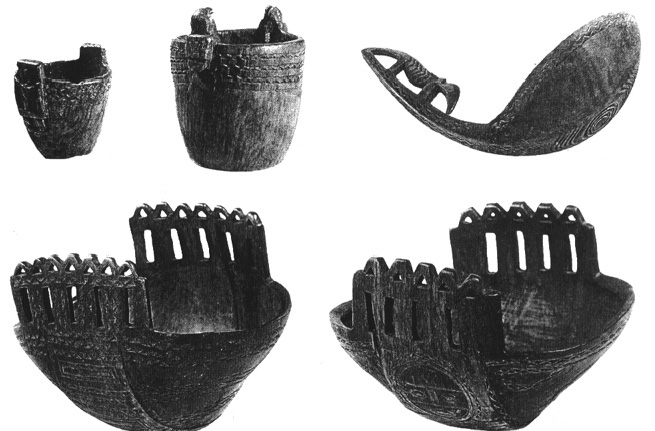| TYPE | WORK ACTION
& WORKED MATERIAL | INFERRED ACTIVITY |
|---|
| CUT | Incise
wide variety of relatively yielding materials, including meat, hide, vegetal matter. | Multipurpose tool. | |
| GRAVE | Incise
resistant materials, such as bone, antler and wood. | Wood, bone and antler working. Both early-stage (e.g. groove-and-splinter) and late-stage (e.g. decoration on finished artifact) work may be represented. | |
| LITHIC / PERFORATE | Perforation
both rotary and simple, of a relatively resistant materials, such as wood, bone and antler. | Perforation of antler, bone and wood for a wide variety of tasks. | |
| SCRAPE | Scrape
a wide variety of medium-hard materials, such as hide, wood, bone and antler (hide scrapers are discussed in the text). | General-purpose scraping. | |
| SHAVE | Shave
on moderately resistant material, such as wood, but unlikely on such material as bone or antler. | Woodworking, probably in both roughing-out (early) stages, as well as later, smoothing stages. | |
| WEDGE | Wedge
of resistant raw materials, such as bone and antler. | Splitting resistant worked materials. Small size suggests use on bone and antler rather than wood, for which there are bone/antler wedges of appropriate size. | |
| SAW | Cutting
resistant materials, such as wood or bone, but unlikely antler. | Wood and bone working in rather early stages. | |
| LITHIC POINT | Puncture
terrestrial animals. | Hunting terrestrial game, such as elk and deer. | |
| ABRADE | Abrade
wide variety of raw materials, such as bone, antler and wood. Differences in abrader raw material (e.g. basalt vs- pumice) suggest differences in worked material, and are discussed in the text. | General-purpose abrasion tool for wide variety of activities. | |
| MORTAR/BOWL | Percussive base
and/or
temporary container.
| Probably used for a wide variety of crushing and pounding activities, including both extravtive and maintenence activities. | |
| MAUL/PESTLE | Percussive hammer
used on variety of non-lithic materials. | Wide variety of uses in woodworking (mauls) and, in conjunction with mortars (pestles), activities such as food processing. | |
| NET WEIGHT | Sinking
fishing net weights. | Fishing, likely for salmon or sturgeon. | |
| BONE/ANTLER POINT+BIPOINT | Puncture + apprehend
aquatic species, such as sturgeon and seal. | In most cases, hunting of aquatic mammals, such as seal. Some hunting of terrestrial mammals as well. | |
| BONE/ANTLER HARPOON VALVE | Apprehend
aquatic mammals. | Sea mammal hunting, primarily. | |
| BONE/ANTLER WEDGE/ADZE | Wedge & adze medium resistant materials, such as wood. | Woodworking, in potentially all stages (early, middle and late), but emphasis on early to middle stages such as 'roughout'. | |
| BONE/ANTLER CHISEL | Chisel
moderately resistant material such as wood. | Woodworking, probably more commonly towards end of production process, such as in finishing work. | |
| BONE/ANTLER PERFORATOR | Perforate
moderately resistant material, such as leather,
as well as pushing material through holes, as in basketry. Possibly pressure applicant, as for pressure-flaking. | Probably mostly representing hide-working and basketry construction. Some few items may be pressure flakers. | |



